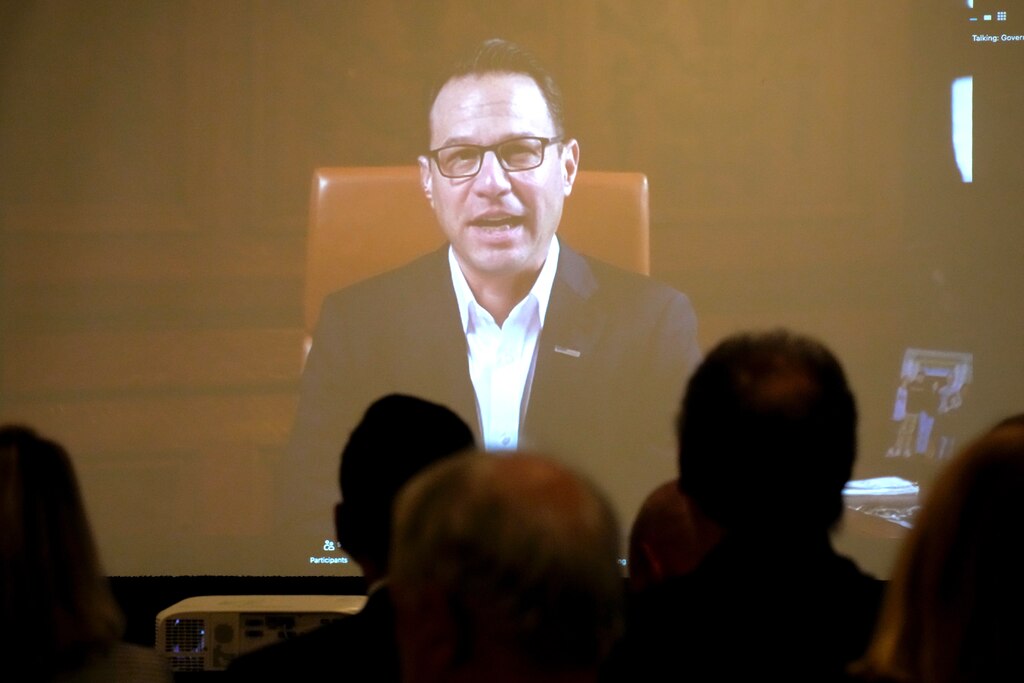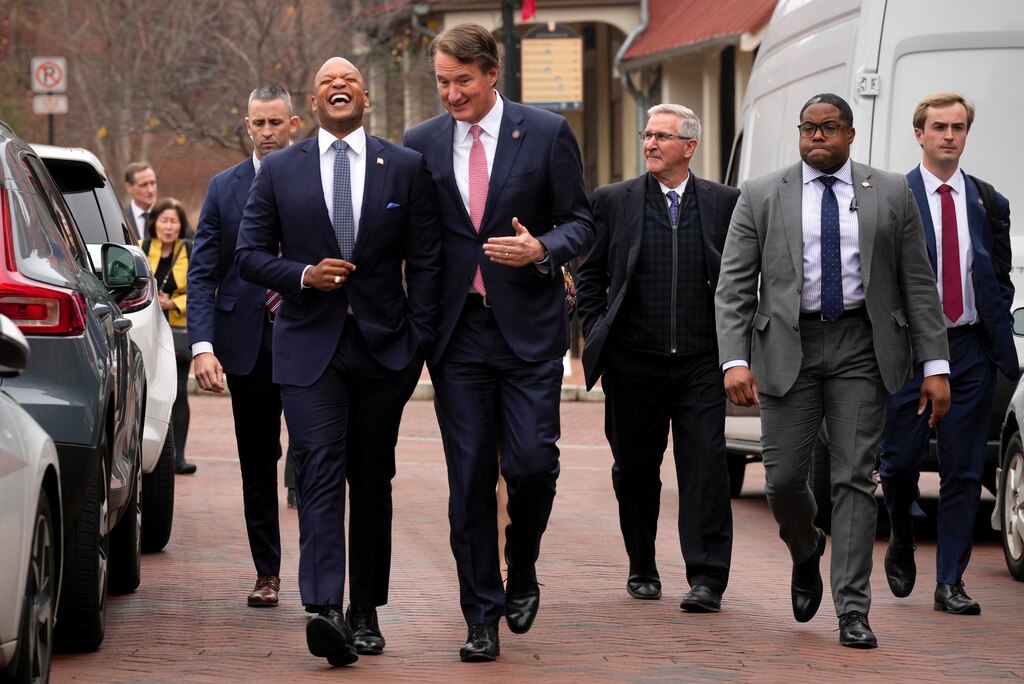In what was billed as perhaps the most important meeting of Chesapeake Bay leadership in a decade, state heads from across the watershed convened Tuesday in Annapolis to begin mapping a path forward with the cleanup effort on the brink of missing long-held pollution reduction goals.
Environmentalists cheered plans for governors from the Chesapeake watershed’s “big three” states — Maryland, Pennsylvania and Virginia — to all attend this annual meeting for the first time in a decade, but Pennsylvania Gov. Josh Shapiro ended up calling in by video, saying that fog blanketing the region prevented him from making the trip.

The meeting of Shapiro with Maryland Gov. Wes Moore and Virginia Gov. Glenn Youngkin — three of the highest profile governors in the country — comes at a pivotal moment in the four-decade restoration effort. As a slate of important pollution targets are about to be missed at the start of 2025, scientists are reconsidering their cleanup strategy. And, while the Chesapeake Bay is coming off its highest environmental grade in two decades, advocates are also bracing for the possibility of federal funding cuts under President-elect Donald Trump.
So getting top leadership from the Chesapeake watershed to recommit to the restoration and begin the process of reassessing its goals was an important step for bay advocates.
The Baltimore Banner thanks its sponsors. Become one.
Moore and Shapiro — both Democrats — and Youngkin — a Republican — joined federal regulators and representatives from the rest of the six watershed states and Washington, D.C., in pledging their sustained support for the partnership’s foundational 2014 agreement, which laid out the 2025 deadlines. By approving a new charge, the group symbolically affirmed their commitments to the restoration and committed to revising the 2014 agreement in the next 12 months.
The partnership has not yet determined new deadlines for the unrealized goals for reducing the levels of pollutants such as phosphorus and nitrogen released in the bay.
Though Shapiro wasn’t in the room Tuesday, the Pennsylvania governor’s participation was nonetheless significant for bay advocates. Environmentalists regularly blame the Keystone State for failing to crack down on its pollution into the bay, and its governor hadn’t appeared at the annual executive council meeting since 2016, according to an EPA spokesperson.
“For a long time Pennsylvania was on the sidelines, and now Pennsylvania is in the game,” Shapiro said to applause from the room.
The Democrat pointed to a broad number of efforts his state has taken to curb its contribution to the problem, touting millions of dollars announced this week for cleaning rivers and streams, and citing recent work to crack down on pollution from wastewater treatment facilities and to incentivize environmentally friendly practices by farmers.
The Baltimore Banner thanks its sponsors. Become one.
Like his Democratic peers, Youngkin touted his support of the bay partnership and steps Virginia has taken to curb both wastewater and agricultural pollution. But the Republican also stressed evaluating “measures over models” and hammered on the importance of setting realistic goals this time.
The targets the partnership laid out for 2025 were unrealistic, Youngkin said. Still, he added, the targets themselves don’t need to change — “We just need more time to achieve them.”
Youngkin, who has walked a delicate line with the right-flank of his own party, did not answer a question about the implications of the Trump administration for the bay.
Kristin Reilly, director of the Annapolis-based Choose Clean Water Coalition, found this show of support from the Chesapeake’s most prominent leaders encouraging, despite the disappointment of unrealized goals.
“For so long we’ve heard ‘by 2025,’” Reilly said ahead of the meeting.
The Baltimore Banner thanks its sponsors. Become one.
Now that deadline is here, and the timeline for addressing some of advocates’ most important priorities remains up in the air. But it’s almost more important, Reilly said, to demonstrate that all of the partners are still committed to getting it done, evaluating their successes and shortcomings “to change the way that we work.”
Among 31 environmental outcomes outlined in the 2014 agreement, the restoration effort achieved 18 of them by their deadline. Officials have touted progress, in particular, curbing pollution from industrial sources and wastewater treatment plants, and broadly agree that the biggest challenge ahead is addressing more diffuse pollution washing into the watershed from urban stormwater and farms.

A new agricultural advisory committee, approved Tuesday by executive council members, is designed to bring farmers to the table in efforts to contain agricultural pollution. Moore, Shapiro and Youngkin each emphasized working collaboratively with farmers over more heavy-handed regulatory approaches.
“Progress is possible, but it’s only possible because of collective efforts,” said Moore, stressing the importance of buy-in across the states.
The Maryland governor, who has chaired the executive council over the last year and will resume that role for one more, also teased a bill he plans to introduce in the upcoming legislative session to bolster the state’s attention to bay farms. That proposal would be aimed at increasing regenerative farming practices on public lands, supporting oyster farms and enhancing water quality monitoring within the state Department of Natural Resources.
The Baltimore Banner thanks its sponsors. Become one.
Progress over 40 years of bay cleanup has been slow. But state leaders expressed confidence Tuesday that they’ll be able to capitalize on recent momentum.
“We set 2025 as a deadline, not a finish line,” said Virginia Del. David Bulova, a Democrat who chairs the Chesapeake Bay Commission. “We knew that we would need to continue our work.”




Comments
Welcome to The Banner's subscriber-only commenting community. Please review our community guidelines.